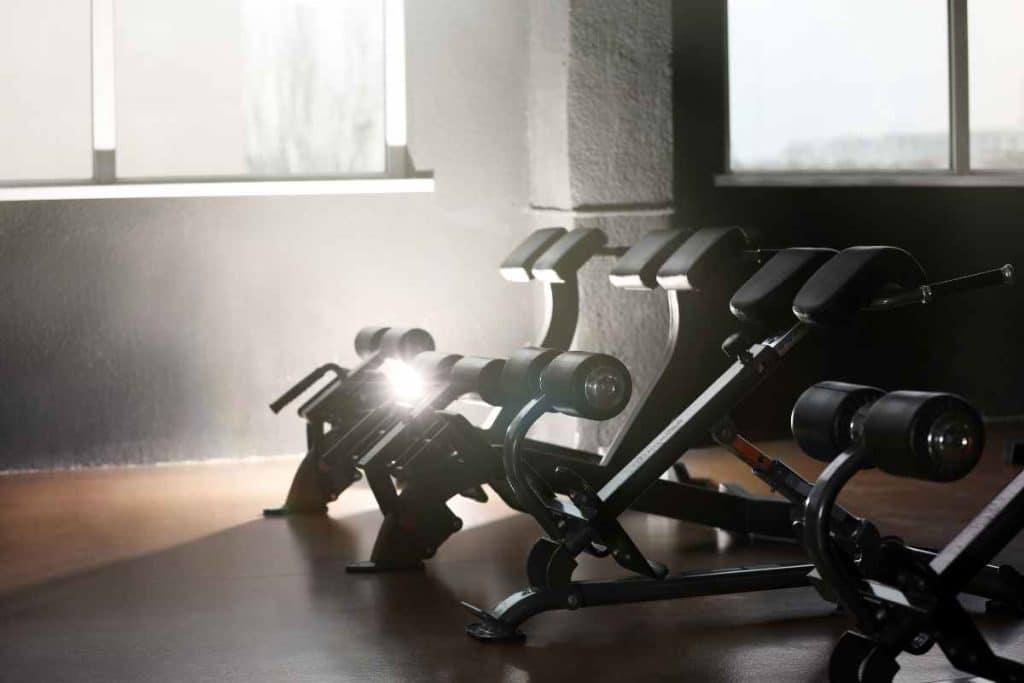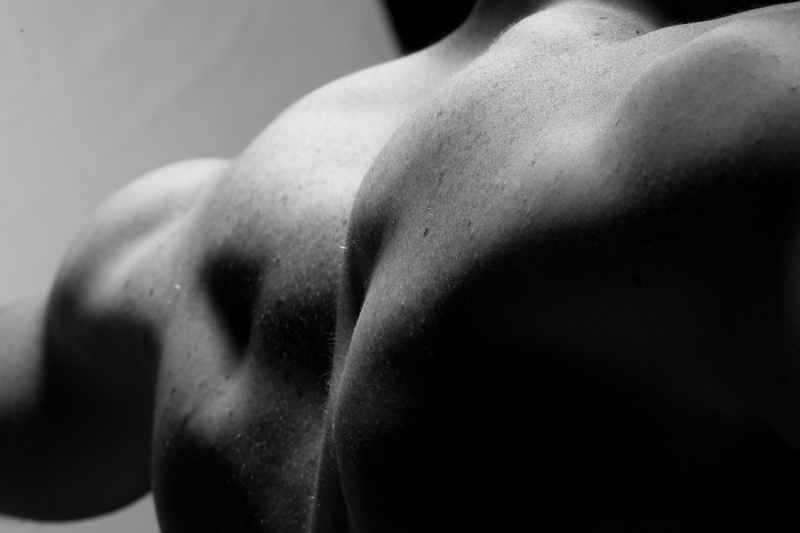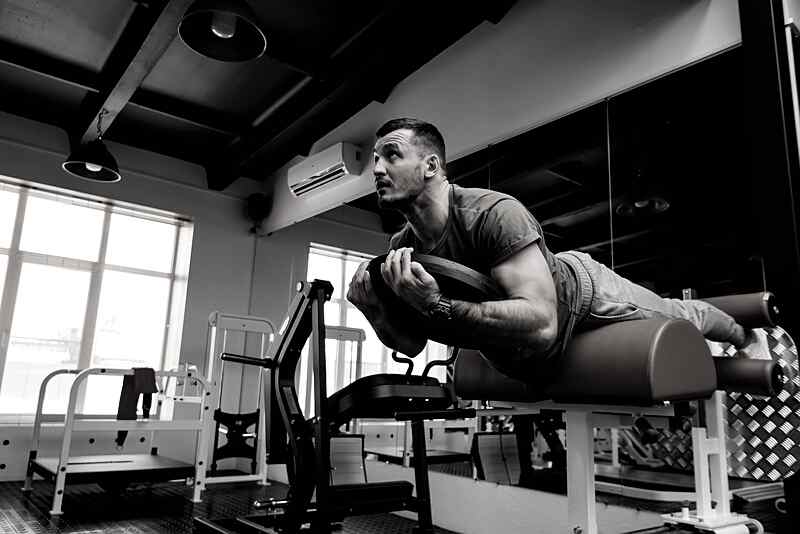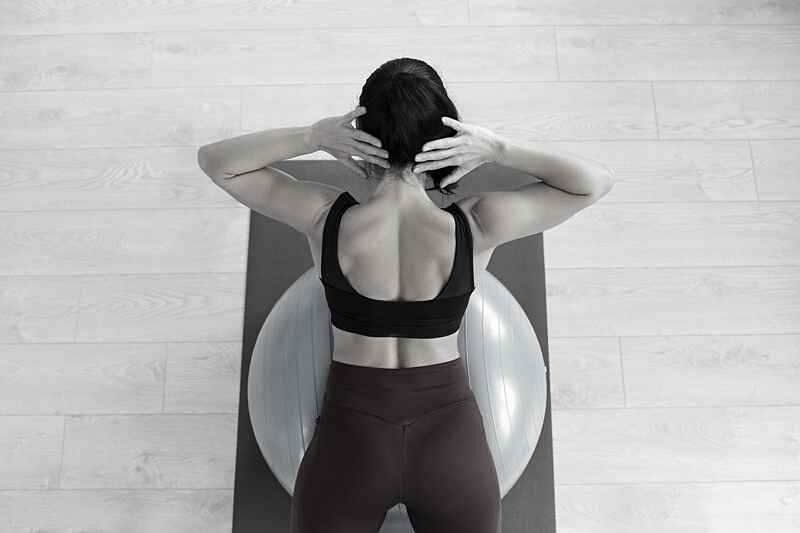The back extension is an excellent exercise for developing a stronger backside. Here’s a deeper look at ALL the muscles worked in this exercise and some variations so you can bulletproof your back.

Your spinal muscles are some of the most important—and, unfortunately, most injury-prone—muscles in your body.
Training your lower back muscles is crucial for bulletproofing your spine against injuries, but it’s also one of the fastest ways to injure yourself if you’re not careful/do the wrong exercises.
Back hyperextensions are one of the “safe” alternatives for strengthening your lower back.
The combination of controlled bodyweight-loaded movement and an unmoving bench makes it easier to maintain proper posture and form throughout the entire exercise, reducing jerking and preventing back strains.
Below, we’ll take a closer look at this exercise, including what muscles it works, what the benefits of this specific exercise is (vs. other back exercises), and a few of the best variations to help you target your spinal muscles.
We’ll also answer a few of the most commonly asked questions so you can understand everything you need to know to safely and effectively include back extensions into your workout!
Let’s jump right in.
Muscles Worked in Back Extensions
Let’s start off with the basics: the muscles worked in back extensions.
Back extensions target the erector spinae (or spinal erector) muscles that run alongside your spine. These are the muscles that maintain your posture, help you stay upright, allow you to bend forward and backward, and essentially facilitate any movement that involves your lower back.
Simply put: without these muscles, your upper and lower body would not be able to move in synchronicity, and your spine would have no reinforcement or protection.
In addition to your spinal erector muscles, back extensions also target your hips and gluteal muscles.
When you mount the back extensions bench—also called the Roman chair—your back is fairly isolated, but your glutes still have to work together with your lower back to raise and lower your upper body throughout the movement. Your hips also help to facilitate the movement, though there is only minimal recruitment.
Some people find that back extensions also work their shoulders. Because you’re squeezing your shoulder blades to maintain your posture (stiff upper body), you may feel the tension in your shoulder muscles (particularly your traps).
Again, it’s only minimal engagement, but it’s enough to be worth mentioning.
What are the Benefits of Doing Back Extensions?
? Benefit #1: Stronger Spine
Your spinal muscles are crucial for protecting your lower back. The more weight the muscles can support, the heavier the load you can carry without straining your back.
However, when your muscles are overloaded and unable to support a heavy weight, your spinal column (bones and joints) provides additional support. That is when you are most prone to wear and tear or even injury in your spine.

Stronger spinal muscles also ensure that your spine is supported when performing less-common motions—bending, twisting, etc. It’s in these postures that the joints in your lower back are at their most vulnerable, but strong lower back muscles ensures that the joints remain stable.
By strengthening your lower back, back extensions make you less prone to injury.
? Benefit #2: Better Core Stability
Your abdominals, obliques, and spinal erectors form your core, the muscles that keep your upper body upright and facilitate movement between your upper and lower body. A lot of trainees focus a great deal on their abs (to build that six-pack) but fail to give their lower body the love and attention it needs. This leads to a muscular imbalance and instability in the lower back.
Training your lower back in EQUAL measure to training your abs is crucial for core stability. You’ll ensure that the muscles on the posterior (back) side of your body—which connect with your upper back, shoulders, glutes, and hamstrings—have the strength and resilience for your daily activities.
More core stability translates into better balance and (once again, crucially important) decreased risk of lower back injuries.
? Benefit #3: Improved Posture and Form
Most lifters spend a disproportionate amount of time training their upper back, focused on heavy pulls and rows.
But one of the best gym machines for back is the back extension bench because it helps support posture and all of that heavy lifting that is happening in the upper back.
Your spinal muscles play a significant role in your posture—more so, it could be argued, than any other muscle in your body.
Because of their location alongside your spine, they provide the support needed to maintain a stiff, straight spine and stay upright when standing, sitting, or moving. They also help to facilitate proper form in every exercise you do.
Typically, you’ll only notice poor form and posture when your back muscles are weak and tire easily.
Strengthening your lower back is crucial for maintaining a healthy posture throughout your everyday life, as well as improving your form through every exercise you do.
Back Extension Variations for More Muscle Activation
Most people are familiar with the standard back extension—the one that utilizes the Roman chair—but did you know there are actually a few variations that you can do if you don’t have that particular piece of equipment?
These variations allow you to change up the way you work your lower back or even adapt the targeting to be more glute/hamstring-focused.
Though they shouldn’t replace back extensions, they can be a useful addition/complement to your workout.
⭐ Back Extension Variation #1: Glute Ham Raise
The glute ham raise is, hands down, one of the best exercises for targeting your glutes and hamstrings together.
They’re not quite the same as back extensions—as you’ll see in my glute ham raise vs. back extension article—but with a slight modification, they can focus more on your lower back than on your glutes and hamstrings.
In fact, I recommend that people use the glute ham raise machine if they don’t have access to a Roman chair.

All you have to do to make it more lower back-focused is to slide backward so your upper thighs are on the pads. This isolates your lower back and allows you to move through the full range of motion without engaging the glutes and hamstrings quite as much.
To perform this exercise:
- Set up the glute ham raise machine. You’ll want to elevate the pads high enough you can raise/lower your torso fully without your head touching the ground. Also, slide the foot plate as far back as possible so your upper thighs/lap is resting on the pad, not your mid-thigh.
- Climb onto the machine, with your feet securely in place against the ankle pads and your lap resting on the support pads.
- Lower your upper body toward the floor as low as possible. Picture yourself trying to touch the floor with your face. Keep your arms crossed over your chest and inhale as you lower.
- With slow, controlled movements, raise your upper body up as high as you can. Exhale as you contract the lower back muscles to lift.
- Repeat as desired.
⭐ Back Extension Variation #2: Reverse Hyper
Reverse hypers (hyperextensions) switch things up so your lower body is the part doing all the moving, and your upper body stays firmly in place.
It’s a fascinating variation that you can try if you don’t have a Roman chair or glute ham raise machine—all you need is a standard weight bench and you’re good to go.
Reverse hypers will work your hips and glutes as well as your lower back, but they’re amazing for training your core to move your legs effectively.
To perform this exercise:
- Lie on a standard weight bench with only your upper body (torso) on the bench. Let your legs hang down so you can kneel on the floor.
- Grip the bench with both hands and contract your lower back to extend your legs straight back behind you.
- DO NOT swing your legs up high, but keep your body as straight as possible.
- Hold the extension for a full 30 to 60 seconds, breathing throughout.
- Rest for 60 seconds between sets and repeat as desired.
⭐ Back Extension Variation #3: Stability Ball Extension
If you love back extensions but don’t have a Roman chair, a stability ball will serve you well.
You’ll get the added element of instability that engages your abs and hips throughout the exercise, all while still getting a kickass lower back workout.

To perform this exercise:
- Lie on a stability ball, with the ball directly beneath your core and lap. Your legs should extend out far enough that your toes can touch the floor to brace.
- Place your hands behind your head (fingertips touching your ears) and flare your elbows out wide.
- Exhale as you lift your chest and upper torso off the stability ball. Don’t lift too high that you strain your lower back, but you should feel the spinal muscles engage. Keep your movements slow and controlled. Squeeze your glutes at the top of the movement and hold for a 1-count.
- Inhale as you lower back down onto the ball.
- Repeat as desired.
⭐ Back Extension Variation #4: Floor Back Extension
You don’t even need equipment to do back extensions when you’ve got the floor!
Take note: this exercise will be more comfortable with a Yoga mat or a blanket to provide cushioning beneath you, but you can do it straight on the floor if necessary.
To perform this exercise:
- Lie face-down on the floor (on a mat/blanket if possible) with your hands behind your head, elbows flared out, legs straight, and feet together.
- Take a deep breath in, then exhale as you lift your upper body off the floor. Try to lift just your chest and upper abdomen, or until you hit the “tension point” in your lower back.
- Inhale as you slowly lower back down to the floor.
- Repeat as desired.
⭐ Back Extension Variation #5: Bench Back Extensions
For our final back extension variation, you’re going to need a flat weight bench or your favorite adjustable weight bench and a decent amount of weight to serve as a counterbalance to weigh you down.
Granted, it’s much easier if you’ve got a buddy handy to hold your legs in place, but if you’re working out solo, you’ll find a heavy barbell plate (or two) or kettlebell can do the trick.
To perform this exercise:
- Lie face down on a standard weight bench, with your upper body (from the waist up) hanging off the bench. Place a heavy weight on your feet or have a buddy hold your legs down.
- Cross your arms in front of your chest and take a deep breath in.
- Exhale as you lift your upper body as high into the air as feels safe. Keep your movements slow and controlled—avoid jerking at all costs.
- Inhale as you lower your upper body toward the floor.
- Repeat as desired.
Do back extensions work your abs?
Back extensions do not work your abs, only your spinal erectors, glutes, and hips. Thankfully, there are plenty of other exercises where you can engage your abs muscles (INCLUDING HYPERLINK TO ARTICLE LISTING AB WORKOUTS).
How do you target hamstrings with back extensions?
To target your hamstrings, you’ll want to shift from a back extension to a glute ham raise. This alternative to back extensions will still work your lower back, but get your hamstrings and glutes in on the action, too. By training all three of these muscles together, you can build serious posterior chain power!
The Bottom Line
It’s no exaggeration to say that it’s ABSOLUTELY CRITICAL that you train your spinal muscles!
They’re what keep you upright, bear any load on your upper body, and protect your spine against injuries.
Thanks to exercises like back extensions—and all the variations I shared here—you can give your lower back muscles the love they deserve and “bulletproof” your back as much as humanly possible.
More Articles and Guides Like This
How to Do Back Extensions Like a Pro (Plus Benefits, Rep Ranges, and More). Back extensions are one of my favorite exercises for reducing injury, protecting your back, and stronger posture. Here’s how to do this exercise like a pro.
5 Best Back Extension Benches (and Roman Chairs) for Home Gyms. Strengthen your glutes, hamstrings, and improve back stability in the comfort of your own home. Read on for a detailed breakdown of the best back extension benches and Roman chairs for home gyms.